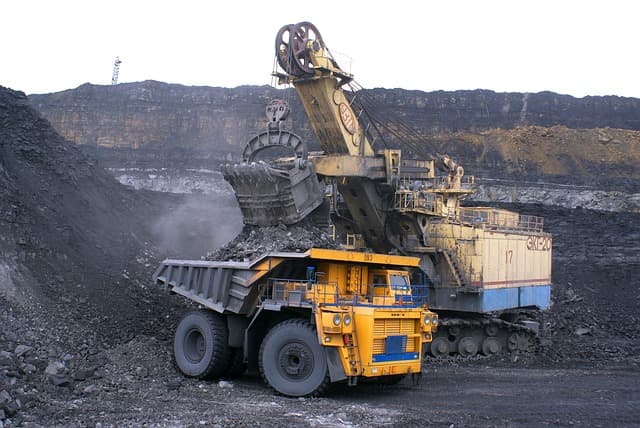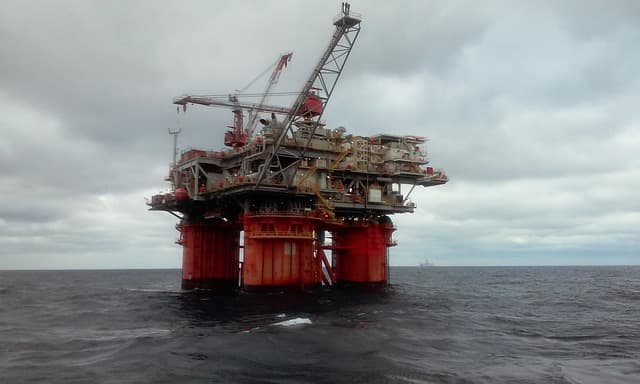The fuel industry is a set of industries engaged in the extraction and processing of various fuels. It includes oil extraction, refining, gas, coal, peat and oil shale industries. It is one of the most important heavy industries. The role of fuel is increasing with the development of technical progress and its inextricably linked mechanization, automation, electrification, and heating production, which leads to intensive growth of energy consumption in the economy. Fuels, especially oil and gas, are also used as raw materials for the chemical industry.
Includes the following basic industries:
Coal industry
Coal is a type of fossil fuel formed from parts of ancient plants underground without access to oxygen.
The international name for carbon comes from the Latin carbō (coal).
Coal was the 1st fossil fuel used by humans.
It enabled the Industrial Revolution, which in turn fostered the development of the coal industry by providing it with more modern technology.
The average combustion of 1 kg of coal emits 2.93 kg of CO2, and amounts to 23-27 MJ (6.4-7.5 kWh) of energy, or at 30% efficiency, 2.0 kWh of electricity.
In 1960 coal accounted for about 50% of world energy production, by 1970 its share had fallen to 1/3.
The use of coal increases in times of high oil and other energy prices.
The shale revolution in the US forced down the price of US coal, whose supply began to displace more expensive fuels in Europe.
The formation of coal requires an abundant accumulation of plant matter.
The ancient peatlands, from the Devonian period (about 400 million years ago), accumulated organic matter, from which fossil coals were formed without access to oxygen.
Most of the commercial deposits of fossil coal date from this period, although younger deposits do exist.
The oldest coal deposits are estimated to be about 300-400 million years old.
Coal, like oil and gas, is an organic matter that has been slowly decomposed by biological and geological processes. The basis for the formation of coal is plant residue.
Depending on the degree of transformation and the specific amount of carbon in coal, there are 5 types:
- lignite
- sub-bituminous coal
- bituminous coal
- anthracite
- graphite

Gas industry
Natural gas is the most promising fuel, given its huge reserves offshore. It has a high calorific value and does not require processing before use; it is easier to extract and transport (through large-diameter pipes). There are possibilities of creating large underground gas storage facilities and of liquefying gas (for longdistance transportation and other purposes). Major natural gas reserves are located in former Soviet Union countries (incl. Russia – over 26 % of world reserves) and countries of the Middle East region (over 40 %). However, most of the production is concentrated in industrially developed countries. World natural gas production in 2004 exceeded 2.6 trillion m³. Leaders: Russia, USA, Canada, UK, Algeria, Indonesia. Gas is transported through pipelines on land and by sea. Leading gas exporting countries: Russia (over 1/3 of world export), Canada, Algeria, Norway, Netherlands, Malaysia, Uzbekistan.
Oil industry
Crude oil is widely used as a fuel and a raw material for the chemicals industry. Many economies are based on exporting oil, almost all of which is marketable. This fuel has a huge impact on the world’s economies and on international politics.
The main chemical elements that make up oil are carbon at 83-87%, hydrogen at 12-14% and sulphur at up to 7%. The latter is usually present in the form of hydrogen sulphide or mercaptans, which can cause corrosion of equipment. The oil also contains up to 1.7% of nitrogen and up to 3.5% of oxygen in the form of various compounds. Rare metals (e.g. V, Ni, etc.) are present in very small quantities in the oil.

The characteristics and composition of oil can vary greatly from field to field. Its density varies from 0.77 to 1.1 g/cm³. The highest density is 0.82-0.92 g/cm³. The boiling point varies from 30 to 600°C depending on the chemical composition of the oil. The distillation of oils into fractions is based on this property. Viscosity varies widely with temperature. The surface tension may vary, but it is always lower than that of water: this property is used to displace oil with water from reservoir pores.
